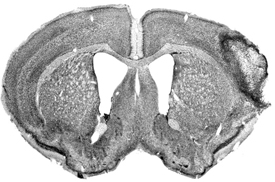Why Coffee Protects Against Diabetes
*Researchers discover molecular mechanism behind drink’s prophylactic effect*
Coffee, that morning elixir, may give us an early jump-start to the day, but numerous studies have shown that it also may be protective against type 2 diabetes. Yet no one has really understood why.
Now, researchers at UCLA have discovered a possible molecular mechanism behind coffee’s protective effect. A protein called sex hormone–binding globulin (SHBG) regulates the biological activity of the body’s sex hormones, testosterone and estrogen, which have long been thought to play a role in the development of type 2 diabetes. And coffee consumption, it turns out, increases plasma levels of SHBG. (more…)

